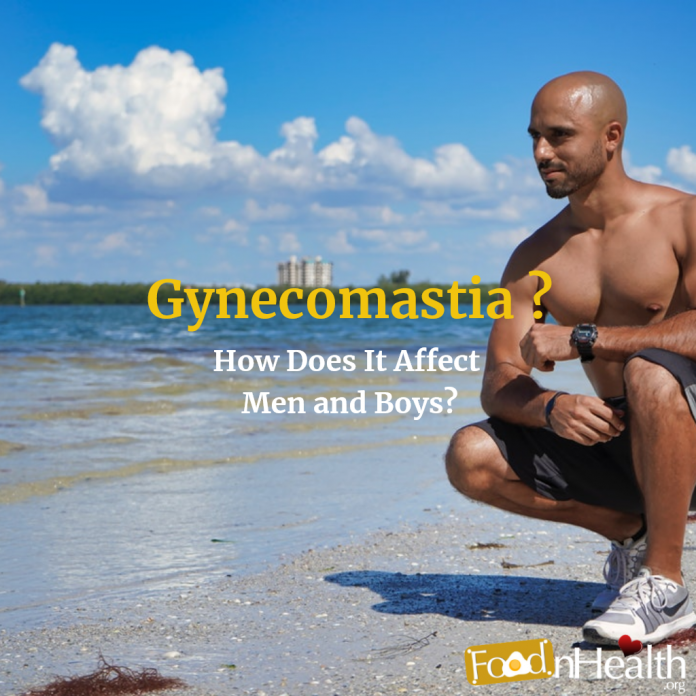Have you ever heard of gynecomastia or Gynecomastia treatment? The more common name for the same is man boobs. Almost, 50% of men and even teenage boys suffer from this condition where they have enlarged breasts. It is a physiological condition which can affect you psychologically also. It is said teens suffer from this condition mostly because of changing levels of sex hormones, and it is said that in most cases, in fact almost 90% of these cases, where the boys experience enlarged breasts. However, when it comes to adult men the condition usually does not resolve on its own.
One can resolve the condition successfully with surgery. The extra effeminate flab in the chest can be improved via a male breast reduction surgery.
Top Reasons to Select Gynecomastia Surgery
So, is surgery the first line of treatment to treat gynecomastia? Not really, most doctors suggest weight loss to be your primary mode of treatment. But in some cases, weight loss may not be enough to get rid of the excess glandular tissue, “moobs” or man boobs. So the only permanent way to get rid of moobs is to go for gynecomastia male breast reduction surgery. This surgery will raise the patient’s dwindling self-esteem.
So, if you are suffering from fledgling morale because of your ‘moobs’ you can try gynecomastia treatment and shake off the feeling of low-esteem. You can start by contacting a qualified surgeon who could change the way you look.
Symptoms of Gynecomastia
Are you suffering from gynecomastia? Take a look at some of the symptoms to diagnose the condition. If you feel a lumpy mass under either one or both of your nipples or you see a sudden change in your chest and your breasts develop in an unnatural way, you’ll know you are suffering from gynecomastia.
Men feel self-conscious of their chest and refuse to go shirt-free in a public area. Sometimes they feel so affected by their appearance that they may stop making appearances and going for either a swim or even working out in the gym. They avoid these areas as they have to either wear tight outfits or turn up in swim trunks, read in the pool area. Yes, you can treat gynecomastia with surgery, but first, it is essential to know all the causes. Take a look at some of them.
- Age – As you start aging your skin loses its elasticity and becomes slack, this makes your chest to sag and look pendulous. This only affects men who suffer from a hormonal imbalance.
- Alcohol – Excessive alcohol consumption has several detrimental effects on your body and gynecomastia is just one of the numerous effects. Since alcohol leads to liver damage it impacts hormone metabolization. This leads to gynecomastia. Other causes of hormonal imbalance are Kidney disorders, thyroid disorders, and malnutrition.
- Cancer – A few types of cancers such as testicle and lung cancers are said to cause man boobs. Benign pituitary tumor or prolactinomas can also cause ‘moobs.’
- Drugs – High blood pressure medication and ulcers tend to increase the size of breasts in men. Medications such as anti-depressants and some antibiotics can cause hormonal imbalance too, leading to the development of moobs. Be wary of cosmetic products as they may also cause the development of man boobs. Read labels and avoid cosmetics with too many chemicals.
- Obesity – Overweight men have a tendency to grow man boobs, the excess fat accumulates on the chests. This fat accumulation impacts the hormone regulation leading to the altercation of breast tissues in men.
- Puberty – Gynecomastia affects adolescent boys too apart from adults. It helps if they get treated right at the onset. A careful analysis is necessary by an experienced doctor. The doctor even likes to wait it out for some time as these conditions sometimes get resolved on their own. But in certain cases treatment becomes a necessity.
- Body-building steroids – Most men fall into the trap of building mass in lieu of natural supplements with the help of steroids. They believe flooding their bodies with steroids can help them get faster results. It raises the estrogen production in the body and enhances breast tissues.
- Pre-birth – It’s not only about adults and teenagers only even pre-born babies may suffer from this problem and the process may start as early as in the mother’s womb when they are exposed to a higher level of estrogen in the womb. But this condition usually resolves on their own.
Surgery for Gynecomastia
Some men develop enhanced breast glands which are firm and dense, also soft fatty tissue. This ratio differs from person to person. A person with gynecomastia has a combination of both types of tissues.
Liposuction is an effective way to remove fatty tissue. The process involves inserting a small tube via a 3- to 4-millimeter incision. Excision is using a scalpel to cut out the tissue and remove the excess glandular tissue. This leaves a scar right around the edge of the nipple. If the skin and tissue are drastically reduced the incision and the scar will turn out to be larger. In certain cases, there is the use of both excision and liposuction procedures.
After the surgery, the chest will remain bruised and swollen, and the patient may have to wear an elastic pressure garment for at least 2 weeks to help reduce the swelling.
A patient has to take it easy after the surgery and take at least 6 weeks to return to a normal routine. Usually, these type of surgeries are successful and have little chance of failing. However, in some cases, the failure of surgeries may be as follows, the uneven contour of the chest line, insufficient removal of breast tissue, and a decreased sensation in either of the two nipples. Excision may lead to a risk of a blood clot forming and it requires draining.
In some cases, gynecomastia can resolve without any type of treatment. However, most treatments are successful and may have physiological as well as psychological benefits.


























